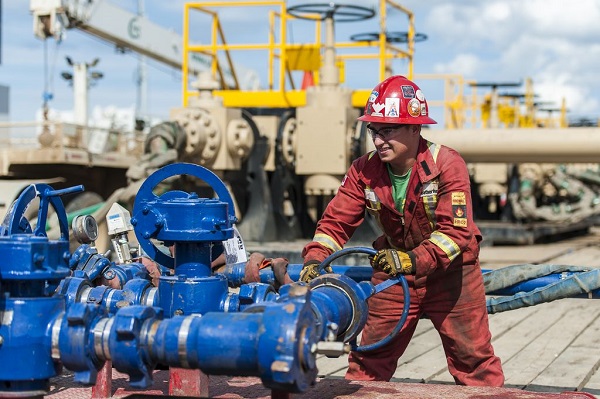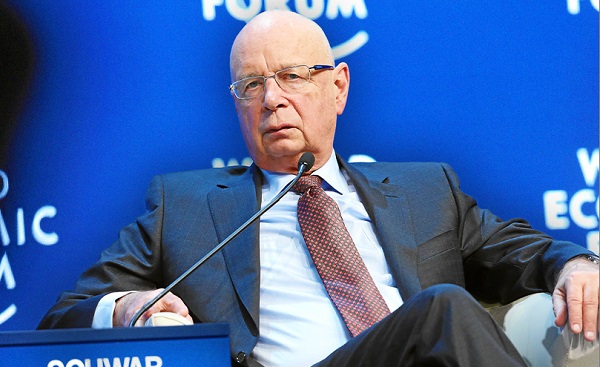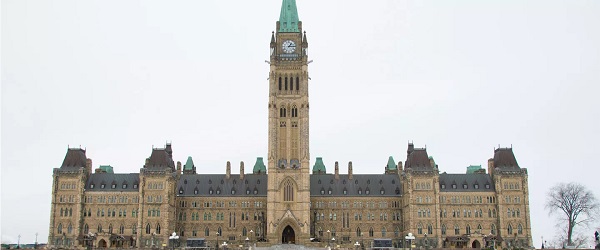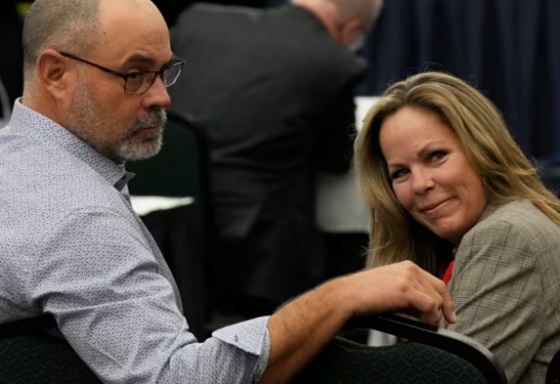Business
Debunking the myth of the ‘new economy’

From Resource Works
Where the money comes from isn’t hard to see – if you look at the facts
In British Columbia, the economy is sometimes discussed through the lens of a “new economy” focused on urbanization, high-tech innovation, and creative industries. However, this perspective frequently overlooks the foundational role that the province’s natural resource industries play in generating the income that fuels public services, infrastructure, and daily life.
The Economic Reality
British Columbia’s economy is highly urbanized, with 85% of the population living in urban areas as of the 2021 Census, concentrated primarily in the Lower Mainland and the Capital Regional District.
These metropolitan regions contribute significantly to economic activity, particularly in population-serving sectors like retail, healthcare, and education. However, much of the province’s income—what we call the “first dollar”—originates in the non-metropolitan resource regions.
Natural resources remain the backbone of British Columbia’s economy. Industries such as forestry, mining, energy, and agriculture generate export revenue that flows into the provincial economy, supporting urban and rural communities alike. These sectors are not only vital for direct employment but also underpin metropolitan economic activities through the export income they generate.
They also pay taxes, fees, royalties, and more to governments, thus supporting public services and programs.
Exports: The Tap Filling the Economic Bathtub
The analogy of a bathtub aptly describes the provincial economy:
- Exports are the water entering the tub, representing income from goods and services sold outside the province.
- Imports are the water draining out, as money leaves the province to purchase external goods and services.
- The population-serving sector circulates water within the tub, but it depends entirely on the level of water maintained by exports.
In British Columbia, international exports have historically played a critical role. In 2022, the province exported $56 billion worth of goods internationally, led by forestry products, energy, and minerals. While metropolitan areas may handle the logistics and administration of these exports, the resources themselves—and the wealth they generate—are predominantly extracted and processed in rural and resource-rich regions.
Metropolitan Contributions and Limitations
Although metropolitan regions like Vancouver and Victoria are often seen as economic powerhouses, they are not self-sustaining engines of growth. These cities rely heavily on income generated by resource exports, which enable the public services and infrastructure that support urban living. Without the wealth generated in resource regions, the urban economy would struggle to maintain its standard of living.
For instance, while tech and creative industries are growing in prominence, they remain a smaller fraction of the provincial economy compared to traditional resource industries. The resource sectors accounted for nearly 9% of provincial GDP in 2022, while the tech sector contributed approximately 7%.
Moreover, resource exports are critical for maintaining a positive trade balance, ensuring that the “economic bathtub” remains full.
A Call for Balanced Economic Policy
Policymakers and urban leaders must recognize the disproportionate contribution of British Columbia’s resource regions to the provincial economy. While urban areas drive innovation and service-based activities, these rely on the income generated by resource exports. Efforts to increase taxation or regulatory burdens on resource industries risk undermining the very foundation of provincial prosperity.
Furthermore, metropolitan regions should actively support resource-based industries through partnerships, infrastructure development, and advocacy. A balanced economic strategy—rooted in both urban and resource region contributions—is essential to ensure long-term sustainability and equitable growth across British Columbia.
At least B.C. Premier David Eby has begun to promise that “a new responsible, sustainable development of natural resources will be a core focus of our government,” and has told resource leaders that “Our government will work with you to eliminate unnecessary red tape and bureaucratic processes.” Those leaders await the results.
Conclusion
British Columbia’s prosperity is deeply interconnected, with urban centres and resource regions playing complementary roles. However, the evidence is clear: the resource sectors, particularly in the northern half of the province, remain the primary engines of economic growth. Acknowledging and supporting these industries is not only fair but also critical to sustaining the provincial economy and the public services that benefit all British Columbians.
Sources:
- Statistics Canada: Census 2021 Population and Dwelling Counts.
- BC Stats: Economic Accounts and Export Data (2022).
- Natural Resources Canada: Forestry, Mining, and Energy Sector Reports.
- Trade Data Online: Government of Canada Export and Import Statistics.
Bjorn Lomborg
Net zero’s cost-benefit ratio is crazy high

From the Fraser Institute
The best academic estimates show that over the century, policies to achieve net zero would cost every person on Earth the equivalent of more than CAD $4,000 every year. Of course, most people in poor countries cannot afford anywhere near this. If the cost falls solely on the rich world, the price-tag adds up to almost $30,000 (CAD) per person, per year, over the century.
Canada has made a legal commitment to achieve “net zero” carbon emissions by 2050. Back in 2015, then-Prime Minister Trudeau promised that climate action will “create jobs and economic growth” and the federal government insists it will create a “strong economy.” The truth is that the net zero policy generates vast costs and very little benefit—and Canada would be better off changing direction.
Achieving net zero carbon emissions is far more daunting than politicians have ever admitted. Canada is nowhere near on track. Annual Canadian CO₂ emissions have increased 20 per cent since 1990. In the time that Trudeau was prime minister, fossil fuel energy supply actually increased over 11 per cent. Similarly, the share of fossil fuels in Canada’s total energy supply (not just electricity) increased from 75 per cent in 2015 to 77 per cent in 2023.
Over the same period, the switch from coal to gas, and a tiny 0.4 percentage point increase in the energy from solar and wind, has reduced annual CO₂ emissions by less than three per cent. On that trend, getting to zero won’t take 25 years as the Liberal government promised, but more than 160 years. One study shows that the government’s current plan which won’t even reach net-zero will cost Canada a quarter of a million jobs, seven per cent lower GDP and wages on average $8,000 lower.
Globally, achieving net-zero will be even harder. Remember, Canada makes up about 1.5 per cent of global CO₂ emissions, and while Canada is already rich with plenty of energy, the world’s poor want much more energy.
In order to achieve global net-zero by 2050, by 2030 we would already need to achieve the equivalent of removing the combined emissions of China and the United States — every year. This is in the realm of science fiction.
The painful Covid lockdowns of 2020 only reduced global emissions by about six per cent. To achieve net zero, the UN points out that we would need to have doubled those reductions in 2021, tripled them in 2022, quadrupled them in 2023, and so on. This year they would need to be sextupled, and by 2030 increased 11-fold. So far, the world hasn’t even managed to start reducing global carbon emissions, which last year hit a new record.
Data from both the International Energy Agency and the US Energy Information Administration give added cause for skepticism. Both organizations foresee the world getting more energy from renewables: an increase from today’s 16 per cent to between one-quarter to one-third of all primary energy by 2050. But that is far from a transition. On an optimistically linear trend, this means we’re a century or two away from achieving 100 percent renewables.
Politicians like to blithely suggest the shift away from fossil fuels isn’t unprecedented, because in the past we transitioned from wood to coal, from coal to oil, and from oil to gas. The truth is, humanity hasn’t made a real energy transition even once. Coal didn’t replace wood but mostly added to global energy, just like oil and gas have added further additional energy. As in the past, solar and wind are now mostly adding to our global energy output, rather than replacing fossil fuels.
Indeed, it’s worth remembering that even after two centuries, humanity’s transition away from wood is not over. More than two billion mostly poor people still depend on wood for cooking and heating, and it still provides about 5 per cent of global energy.
Like Canada, the world remains fossil fuel-based, as it delivers more than four-fifths of energy. Over the last half century, our dependence has declined only slightly from 87 per cent to 82 per cent, but in absolute terms we have increased our fossil fuel use by more than 150 per cent. On the trajectory since 1971, we will reach zero fossil fuel use some nine centuries from now, and even the fastest period of recent decline from 2014 would see us taking over three centuries.
Global warming will create more problems than benefits, so achieving net-zero would see real benefits. Over the century, the average person would experience benefits worth $700 (CAD) each year.
But net zero policies will be much more expensive. The best academic estimates show that over the century, policies to achieve net zero would cost every person on Earth the equivalent of more than CAD $4,000 every year. Of course, most people in poor countries cannot afford anywhere near this. If the cost falls solely on the rich world, the price-tag adds up to almost $30,000 (CAD) per person, per year, over the century.
Every year over the 21st century, costs would vastly outweigh benefits, and global costs would exceed benefits by over CAD 32 trillion each year.
We would see much higher transport costs, higher electricity costs, higher heating and cooling costs and — as businesses would also have to pay for all this — drastic increases in the price of food and all other necessities. Just one example: net-zero targets would likely increase gas costs some two-to-four times even by 2030, costing consumers up to $US52.6 trillion. All that makes it a policy that just doesn’t make sense—for Canada and for the world.
Business
‘Great Reset’ champion Klaus Schwab resigns from WEF

From LifeSiteNews
Schwab’s World Economic Forum became a globalist hub for population control, radical climate agenda, and transhuman ideology under his decades-long leadership.
Klaus Schwab, founder of the World Economic Forum and the face of the NGO’s elitist annual get-together in Davos, Switzerland, has resigned as chair of WEF.
Over the decades, but especially over the past several years, the WEF’s Davos annual symposium has become a lightning rod for conservative criticism due to the agendas being pushed there by the elites. As the Associated Press noted:
Widely regarded as a cheerleader for globalization, the WEF’s Davos gathering has in recent years drawn criticism from opponents on both left and right as an elitist talking shop detached from lives of ordinary people.
While WEF itself had no formal power, the annual Davos meeting brought together many of the world’s wealthiest and most influential figures, contributing to Schwab’s personal worth and influence.
Schwab’s resignation on April 20 was announced by the Geneva-based WEF on April 21, but did not indicate why the 88-year-old was resigning. “Following my recent announcement, and as I enter my 88th year, I have decided to step down from the position of Chair and as a member of the Board of Trustees, with immediate effect,” Schwab said in a brief statement. He gave no indication of what he plans to do next.
Schwab founded the World Economic Forum – originally the European Management Forum – in 1971, and its initial mission was to assist European business leaders in competing with American business and to learn from U.S. models and innovation. However, the mission soon expanded to the development of a global economic agenda.
Schwab detailed his own agenda in several books, including The Fourth Industrial Revolution (2016), in which he described the rise of a new industrial era in which technologies such artificial intelligence, gene editing, and advanced robotics would blur the lines between the digital, physical, and biological worlds. Schwab wrote:
We stand on the brink of a technological revolution that will fundamentally alter the way we live, work, and relate to one another. In its scale, scope, and complexity, the transformation will be unlike anything humankind has experienced before. We do not yet know just how it will unfold, but one thing is clear: the response to it must be integrated and comprehensive, involving all stakeholders of the global polity, from the public and private sectors to academia and civil society …
The Fourth Industrial Revolution, finally, will change not only what we do but also who we are. It will affect our identity and all the issues associated with it: our sense of privacy, our notions of ownership, our consumption patterns, the time we devote to work and leisure, and how we develop our careers, cultivate our skills, meet people, and nurture relationships. It is already changing our health and leading to a “quantified” self, and sooner than we think it may lead to human augmentation.
How? Microchips implanted into humans, for one. Schwab was a tech optimist who appeared to heartily welcome transhumanism; in a 2016 interview with France 24 discussing his book, he stated:
And then you have the microchip, which will be implanted, probably within the next ten years, first to open your car, your home, or to do your passport, your payments, and then it will be in your body to monitor your health.
In 2020, mere months into the pandemic, Schwab published COVID-19: The Great Reset, in which he detailed his view of the opportunity presented by the growing global crisis. According to Schwab, the crisis was an opportunity for a global reset that included “stakeholder capitalism,” in which corporations could integrate social and environmental goals into their operations, especially working toward “net-zero emissions” and a massive transition to green energy, and “harnessing” the Fourth Industrial Revolution, including artificial intelligence and automation.
Much of Schwab’s personal wealth came from running the World Economic Forum; as chairman, he earned an annual salary of 1 million Swiss francs (approximately $1 million USD), and the WEF was supported financially through membership fees from over 1,000 companies worldwide as well as significant contributions from organizations such as the Bill & Melinda Gates Foundation. Vice Chairman Peter Brabeck-Letmathe is now serving as interim chairman until his replacement has been selected.
-

 2025 Federal Election4 hours ago
2025 Federal Election4 hours agoBREAKING: THE FEDERAL BRIEF THAT SHOULD SINK CARNEY
-

 2025 Federal Election4 hours ago
2025 Federal Election4 hours agoCHINESE ELECTION THREAT WARNING: Conservative Candidate Joe Tay Paused Public Campaign
-

 2025 Federal Election14 hours ago
2025 Federal Election14 hours agoReal Homes vs. Modular Shoeboxes: The Housing Battle Between Poilievre and Carney
-

 2025 Federal Election15 hours ago
2025 Federal Election15 hours agoOttawa Confirms China interfering with 2025 federal election: Beijing Seeks to Block Joe Tay’s Election
-

 International1 day ago
International1 day agoPope Francis has died aged 88
-

 2025 Federal Election1 day ago
2025 Federal Election1 day agoCarney’s budget means more debt than Trudeau’s
-

 2025 Federal Election14 hours ago
2025 Federal Election14 hours agoHow Canada’s Mainstream Media Lost the Public Trust
-

 Business1 day ago
Business1 day agoCanada Urgently Needs A Watchdog For Government Waste




